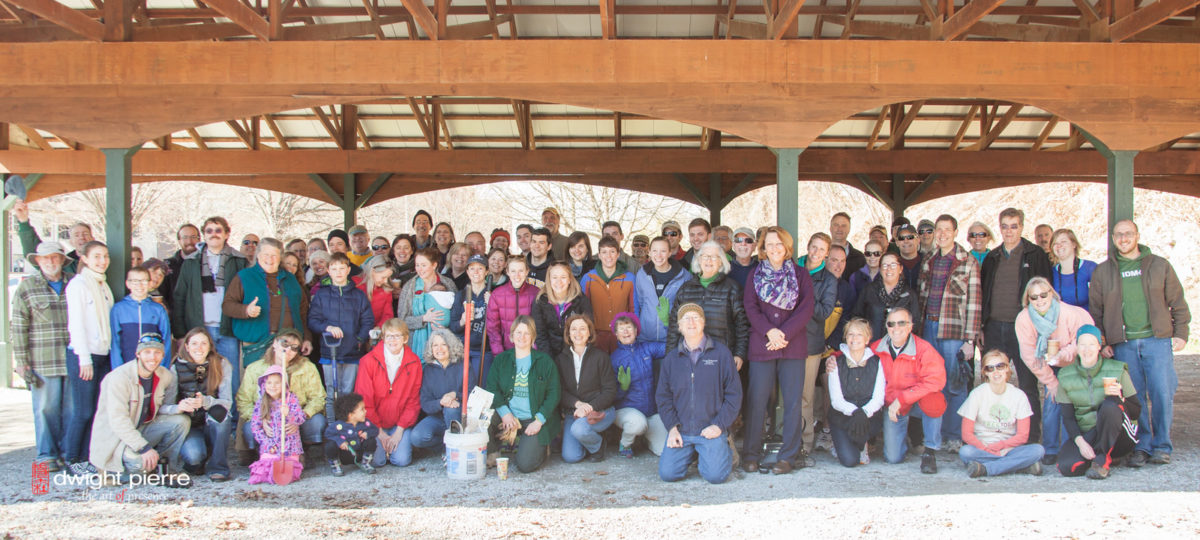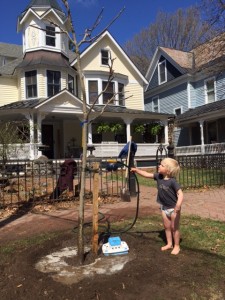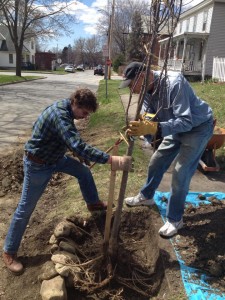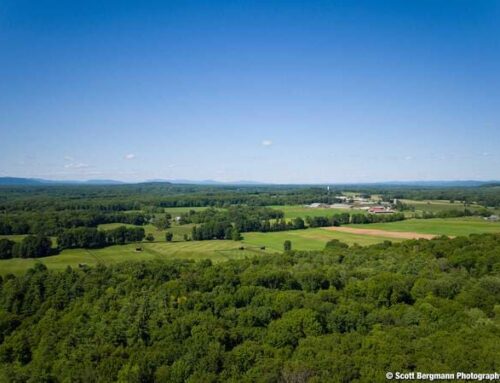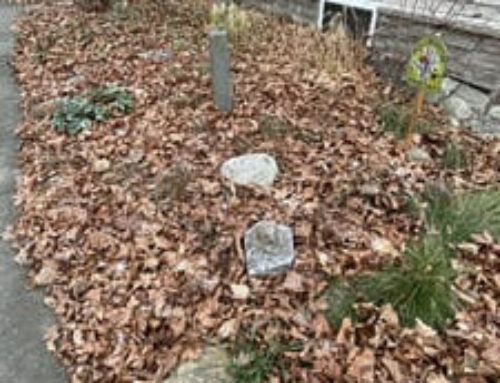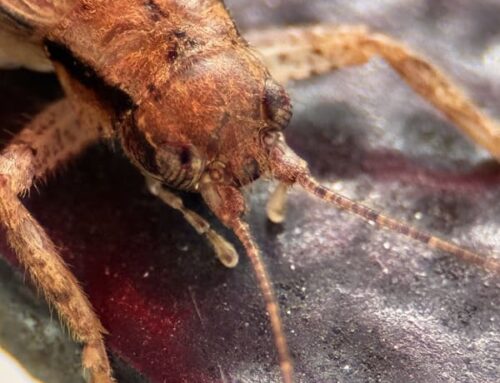THANKS to all who made our second annual Tree Toga planting a success. Especially to all the volunteer planters and tree hosts. The weather was spectacular, if a bit cool. About 70 volunteers gathered at High Rock for training and then fanned out to plant 25 trees in widely scattered locations around the city (see map). Tree hosts responded to our call and agreed to give the young trees lots of TLC during their early, formative years. DPW provided the trees.
Enjoy an amazing collection of photos from the day taken by professional photographer Dwight Pierre.

There were a couple of new twists this year. For the first time, we used bare root trees rather than balled and burlap ones. Without the heavy root ball, volunteers could handle large trees. Some of the newly planted trees are over 12 feet tall. And, since one of the main goals of the City’s 2013 Urban Forest Master Plan is to increase the diversity of species within the City, we planted some underused types of trees: American basswood, Kentucky coffee tree, and, where there were utility wire conflicts, crabapple trees.
Many thanks to all in City Hall and throughout the community who are helping to “preserve and expand” our urban forest!
Also…… stay tuned in the next few weeks for updates about exciting momentum with our CENTENNIAL TREES project.
Tree Toga Forestry Tip #1
The first of what will be an ongoing series providing
practical advice about trees.
Mulch volcanoes kill trees –
Let’s end their use in Saratoga
Properly applied, mulch helps keep the roots cool, retains soil moisture longer, and suppresses weeds. But it is important to keep the mulch away from the trunk of the tree. No matter how many professionals you see piling mulch into volcanoes around the trunk, don’t follow this harmful practice.

A handy rule of thumb for proper mulching is the 3-3-3 method: 3” deep, 3” from the trunk, and a radius of 3 feet.
Why should you NEVER pile mulch against the tree trunk in a “mulch volcano?” These weaken and ultimately kill many trees. Mulch volcanoes can suffocate the tree and, by compromising the bark, can open the tree up to attack from fungi, boring insects, mice and other threats. Use the 3-3-3 method for a healthy tree.

